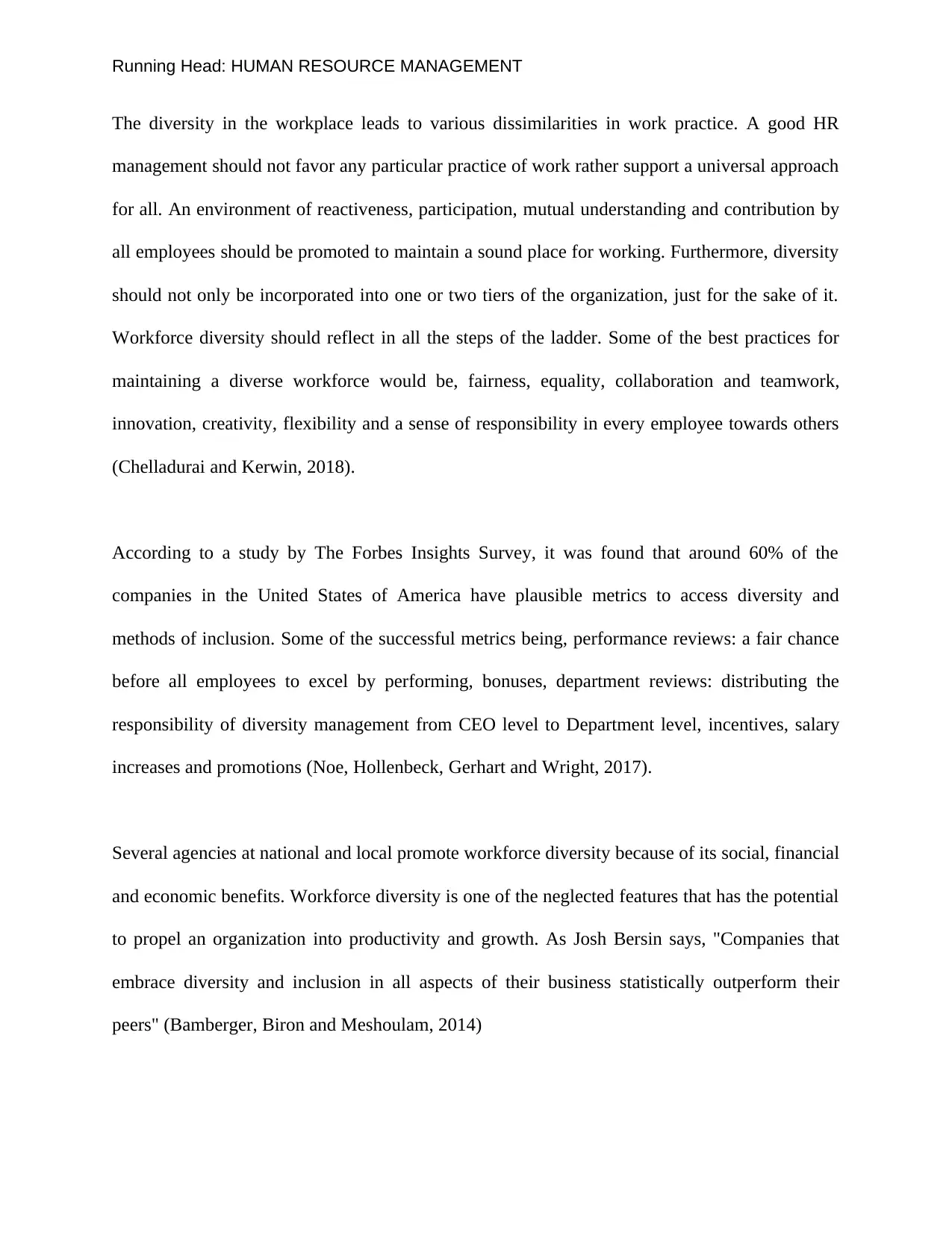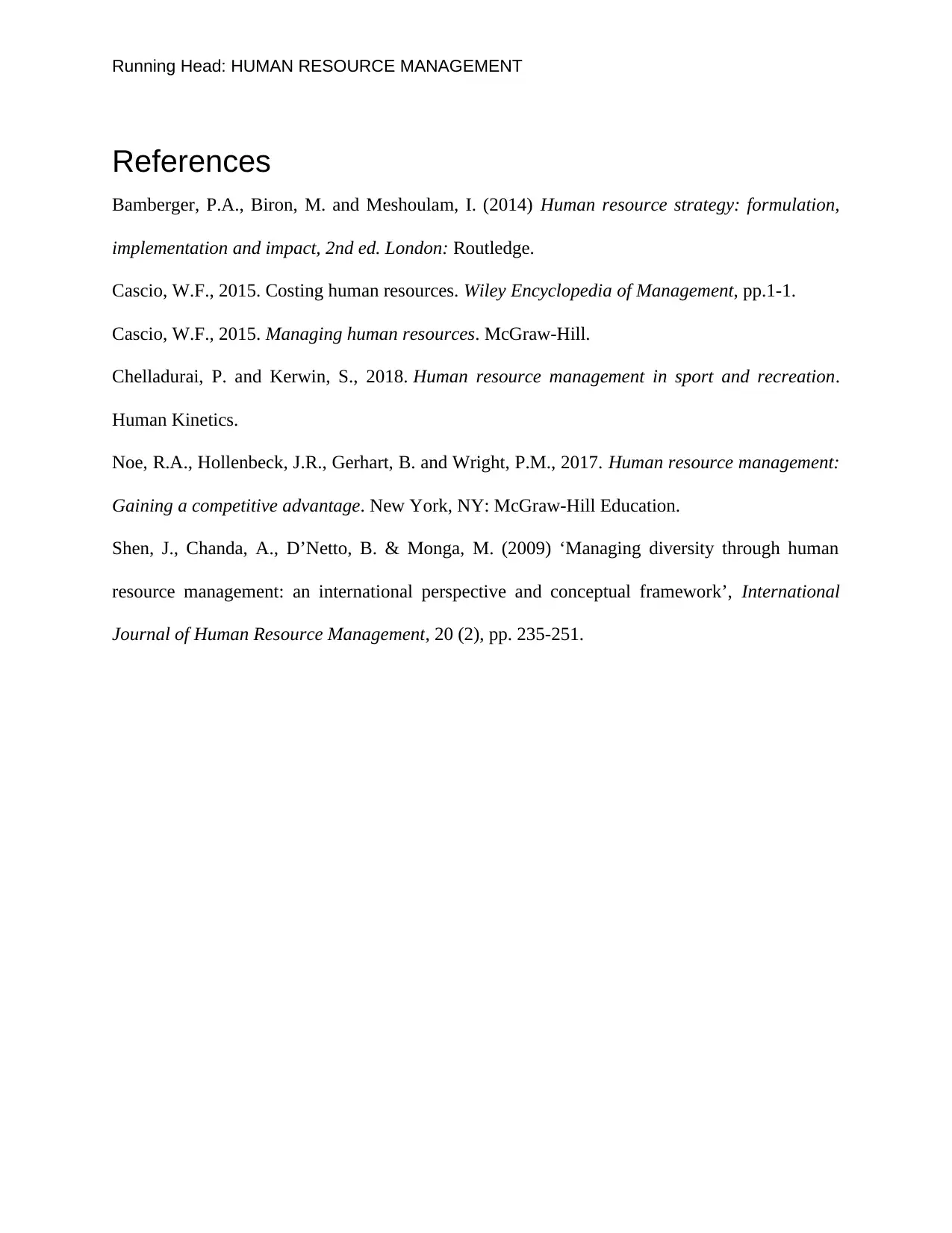Analyzing HR Policy: Diversity Challenges in the Workforce
VerifiedAdded on 2022/11/18
|4
|804
|442
Report
AI Summary
This report delves into the critical role of Human Resource (HR) policy in navigating the complexities of a diverse workforce. It begins by defining workforce diversity, encompassing differences in gender, age, culture, and other factors, and acknowledges its prevalence and importance in modern organizations. The report then highlights the challenges associated with diversity, such as discrimination and favoritism, while emphasizing the potential for increased productivity and employee well-being when diversity is managed effectively. It underscores the HR department's responsibility in identifying, measuring, and fostering diversity through recruitment, training, and the creation of an inclusive environment. The report emphasizes the importance of fairness, equality, collaboration, and innovation. Finally, it references studies and metrics used to assess diversity and inclusion, along with the benefits of embracing diversity, as stated by Josh Bersin, and provides relevant references to support its arguments.
1 out of 4










![[object Object]](/_next/static/media/star-bottom.7253800d.svg)